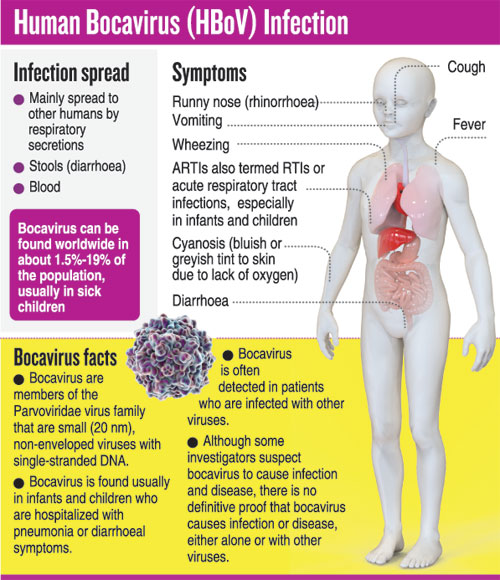Is Bocavirus the culprit?
As Sri Lanka’s MRI undertakes a pilot study using real-time and cutting-edge technology to see whether this micro-organism is behind severe acute respiratory infection in children, Kumudini Hettiarachchi talks to Consultant Medical
Virologist Dr. Jude Jayamaha
This bug was not known around the world until 2005 and even now there is uncertainty whether it is “truly” a pathogen (a micro-organism that causes disease) or an accidental find.

Dr. Jude Jayamaha
It is the Human Bocavirus (HBoV) and this micro-organism has now come under the spotlight in Sri Lanka. “HBoV which is air-borne can cause Severe Acute Respiratory Infection in children,” says Consultant Medical Virologist Dr. Jude Jayamaha of the National Influenza Centre of the Medical Research Institute (MRI).
Explaining how they spotted the HBoV, he says that while routine samples are collected from across the country, clinicians also send samples to the MRI to check whether any new bugs are doing the rounds, in addition to the main viruses that circulate frequently. The testing is usually performed for Influenza A and B and Respiratory Syncytial Virus (RSV).
“In an effort to turn research into practice, in this relatively ‘younger’ HBoV, we did a literature survey and found that its activity in children had not been studied in Sri Lanka. Thereafter, the MRI undertook a pilot study using real-time, cutting-edge technology in the form of PCR,” says Dr. Jayamaha.
PCR or Polymerase Chain Reaction is a technique used in molecular biology to amplify a single copy or a few copies of a segment of DNA (deoxyribonucleic acid) across several orders of magnitude, generating thousands to millions of copies of a particular DNA sequence, MediScene learns.

The Human Bocavirus
DNA is a molecule that carries the genetic instructions used in the growth, development, functioning and reproduction not only of all known living organisms but also viruses.The nine-month study commenced with 82 lower respiratory specimens (naso-pharyngeal aspirates) being collected from all over the country, a majority of which, however, were from the Lady Ridgeway Hospital for Children across the road from the MRI at Borella.
Thirteen or 15% of these specimens came positive for the HBoV, says Dr. Jayamaha, adding that that research findings were published in August in the ‘Bulletin’, the publication of the Sri Lanka College of Microbiologists.
Pointing out that with specimens being taken from children who were suffering from severe respiratory conditions, he says that now they need to probe, through studies on epidemiology and poring over the clinical picture, whether the HBoV is also associated with mild symptoms, to determine whether it is an ‘absolute pathogen’.

| PCR testing technique now available here Earlier, out from Sri Lanka went samples which needed to be checked through the PCR (polymerase chain reaction) technique, at a huge cost. “Now we have this technique at the MRI’s National Influenza Centre,” says Dr. Jude Jayamaha, going into detail how they set it up in collaboration with the National Institute of Virology in Pune, India.Earlier we were using direct fluorescent testing for Influenza A and B, adenovirus, para-influenza and Respiratory Syncytial Virus (RSV). But there were limitations with low sensitivity. It is to determine what is better that the MRI launched a three-year case control study from 2014-2016 on sensitivity and cost between direct fluorescent testing and PCR. Dr. Jayamaha says that they tested 175 respiratory aspirate specimens for Influenza A and B, para-influenza, RSV and adenovirus and found that through fluorescent testing there were only 8% positives, while there was an enormous 76% ‘positives’ through the PCR technique. This was statistically significant. Another important factor that they considered was the time period in which the results would be available – while the direct fluoroscopy took anything between six to eight hours, the PCR results came in two-to-three hours. “This clearly indicated that the PCR technique has more detection power,” he reiterates. With strong proof that the PCR technique is better, the MRI has been able to acquire a real-time PCR machine to help in the detection of viruses quickly and more accurately and thus help thousands of men, women and children to be diagnosed, treated and be sent home from hospital soon. | |


